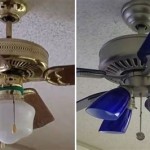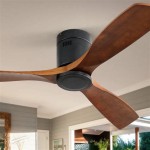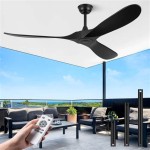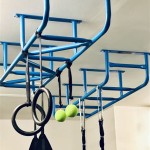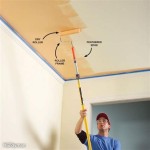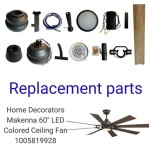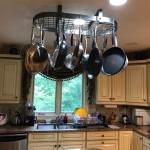Hunter Ceiling Fan Light Cover: A Comprehensive Guide
Hunter ceiling fans are recognized for their durability, performance, and aesthetic appeal. A crucial component of many Hunter ceiling fans is the light cover, which serves not only to diffuse the light emitted by the bulb but also to contribute to the overall design and safety of the fixture. Understanding the various aspects of Hunter ceiling fan light covers, including their types, materials, installation, maintenance, and troubleshooting, can assist in making informed decisions regarding purchasing, replacing, or repairing these components.
Types of Hunter Ceiling Fan Light Covers
Hunter offers a diverse range of light covers to complement various ceiling fan models and interior design styles. These covers can be broadly categorized based on their shape, material, and light diffusion properties.
Glass Light Covers: These are perhaps the most common type of light cover used in Hunter ceiling fans. Glass offers excellent light transmission and can be molded into a variety of shapes and styles, from simple globes to more intricate designs. Different types of glass, such as frosted, seeded, or clear, can also alter the light's appearance and diffusion. Frosted glass provides a softer, more diffused light, while clear glass offers brighter, more direct illumination. Seeded glass introduces a textured element, creating a unique visual effect.
Plastic Light Covers: While less common than glass, plastic light covers offer advantages in terms of durability and weight. Plastic is generally more resistant to impacts and less likely to shatter than glass. These covers are often found in more budget-friendly models or in areas where safety is a primary concern. The light diffusion properties of plastic can vary depending on the type of plastic used and its finish. Some plastic covers are designed to mimic the appearance of glass, offering a similar aesthetic at a lower cost and with increased durability.
Bowl-Shaped Light Covers: These are typically made of glass or plastic and resemble an inverted bowl. They are often used to provide a wide distribution of light, illuminating a larger area. Bowl-shaped covers can be simple or ornate, with various decorative elements such as etched patterns or painted designs. The size and depth of the bowl can also affect the light's intensity and spread.
Globe-Shaped Light Covers: Globe-shaped light covers are another common design, offering a classic and versatile look. These covers are typically made of glass and are available in a range of sizes and finishes. The spherical shape provides uniform light distribution, making them suitable for general lighting purposes. Globe-shaped covers can be easily replaced and are often available as aftermarket options.
Integrated Light Kits: Some Hunter ceiling fans feature integrated light kits, where the light cover is an integral part of the overall design. These kits often include unique shapes and materials, designed to seamlessly blend with the fan's aesthetic. Integrated light kits may offer improved light distribution and a more cohesive look, but they can also be more difficult and costly to replace if damaged.
Materials Used in Hunter Ceiling Fan Light Covers
The materials used in the construction of Hunter ceiling fan light covers significantly impact their durability, light diffusion properties, and overall appearance. The selection of materials is often a trade-off between cost, aesthetics, and performance.
Glass: As mentioned earlier, glass is a widely used material due to its excellent light transmission and versatility. Different types of glass, such as soda-lime glass, borosilicate glass, and lead crystal, offer varying levels of clarity, durability, and heat resistance. Soda-lime glass is the most common and affordable type, while borosilicate glass is more resistant to thermal shock. Lead crystal offers superior clarity and brilliance but is also more expensive.
Plastic: Plastic light covers are typically made from acrylic, polycarbonate, or polystyrene. Acrylic offers good light transmission and is relatively durable, while polycarbonate is known for its exceptional impact resistance. Polystyrene is a more brittle plastic and is typically used in less demanding applications. The choice of plastic depends on the specific requirements of the light cover, such as its size, shape, and expected lifespan.
Metal: Metal trim or accents are sometimes incorporated into the design of Hunter ceiling fan light covers. Metal can add a touch of elegance and sophistication, and it can also provide structural support. Common metals used include brass, chrome, and brushed nickel. The finish of the metal can also affect the overall appearance of the light cover.
Other Materials: In some cases, other materials such as fabric or paper are used in conjunction with glass or plastic to create unique light effects. These materials are typically used as decorative elements and do not contribute significantly to the light cover's structural integrity.
Installation and Replacement of Hunter Ceiling Fan Light Covers
Installing or replacing a Hunter ceiling fan light cover is a relatively straightforward process, but it is essential to follow the manufacturer's instructions carefully to ensure safety and proper functionality. Before beginning any work on the ceiling fan, the power should be turned off at the circuit breaker to prevent electrical shock.
Removing an Existing Light Cover: The method for removing an existing light cover will vary depending on the design of the fan and the type of cover. Some covers are held in place by screws or clips, while others are secured with a twist-and-lock mechanism. Consult the fan's instruction manual for specific instructions. In general, it is important to support the light cover while removing the fasteners to prevent it from falling and breaking.
Installing a New Light Cover: Once the old light cover has been removed, the new cover can be installed. Align the new cover with the mounting points and secure it using the appropriate hardware. Ensure that the cover is properly seated and that all fasteners are tightened securely. Avoid overtightening the fasteners, as this could damage the cover or the fan.
Replacing Light Bulbs: When replacing a light cover, it is also an opportune time to replace the light bulbs. Ensure that the new bulbs are compatible with the fan's wattage and voltage requirements. Different types of bulbs, such as incandescent, LED, or halogen, offer varying levels of energy efficiency and light output. LED bulbs are generally recommended for their long lifespan and energy efficiency.
Safety Precautions: Always follow safety precautions when working with electrical fixtures. Wear safety glasses to protect your eyes from debris, and use insulated tools to prevent electrical shock. If you are not comfortable working with electrical wiring, it is best to consult a qualified electrician.
Maintenance and Cleaning of Hunter Ceiling Fan Light Covers
Regular maintenance and cleaning of Hunter ceiling fan light covers are essential to maintain their appearance and ensure optimal light output. Dust and grime can accumulate on the surface of the cover, reducing the amount of light that is emitted. Periodic cleaning can also prevent the buildup of allergens and improve air quality.
Cleaning Glass Light Covers: Glass light covers can be cleaned with a mild soap and water solution. Use a soft cloth or sponge to gently wipe the surface of the cover, removing any dirt or grime. Avoid using abrasive cleaners or scouring pads, as these can scratch the glass. Rinse the cover thoroughly with clean water and dry it with a soft towel.
Cleaning Plastic Light Covers: Plastic light covers should be cleaned with a similar method, using a mild soap and water solution. However, it is important to avoid using harsh chemicals or solvents, as these can damage the plastic. Some plastic light covers may be dishwasher safe, but it is important to check the manufacturer's instructions before placing them in the dishwasher.
Preventing Dust Buildup: To minimize dust buildup on the light cover, dust the ceiling fan regularly with a soft cloth or duster. You can also use a vacuum cleaner with a brush attachment to remove dust from hard-to-reach areas. Consider using an anti-static spray to help repel dust.
Inspecting for Damage: Regularly inspect the light cover for any signs of damage, such as cracks, chips, or discoloration. Replace damaged covers promptly to prevent further damage and ensure safe operation. A cracked light cover can pose a safety hazard, as it can shatter and cause injury.
Troubleshooting Common Issues with Hunter Ceiling Fan Light Covers
Several common issues can arise with Hunter ceiling fan light covers, including flickering lights, loose covers, and broken covers. Understanding the causes of these issues and knowing how to troubleshoot them can save time and money.
Flickering Lights: Flickering lights can be caused by a variety of factors, including loose connections, faulty light bulbs, or a malfunctioning dimmer switch. Check the light bulb to ensure that it is properly seated in the socket. If the bulb is old or damaged, replace it with a new one. Also, check the wiring connections to ensure that they are secure. A loose connection can cause the light to flicker intermittently. If the fan is equipped with a dimmer switch, try adjusting the dimmer to see if that resolves the issue. A faulty dimmer switch can also cause flickering lights.
Loose Light Cover: A loose light cover can be caused by stripped screws or damaged mounting points. If the screws are stripped, try using a slightly larger screw or inserting a small piece of wood or plastic into the screw hole to provide a tighter grip. If the mounting points are damaged, you may need to replace the entire light kit. Ensure that the light cover is properly aligned with the mounting points and that all fasteners are tightened securely.
Broken Light Cover: A broken light cover is often the result of accidental impact or mishandling. If the cover is made of glass, it is important to clean up any broken pieces carefully to prevent injury. Replacement light covers are available from Hunter and other retailers. When replacing a broken light cover, be sure to select a cover that is compatible with your ceiling fan model. Follow the installation instructions carefully to ensure that the new cover is properly installed.
Discoloration: Over time, light covers, especially those made of plastic, may become discolored due to exposure to UV light or heat. Unfortunately, discoloration is often difficult to reverse. Regular cleaning can help to prevent discoloration, but if the cover is severely discolored, it may need to be replaced. When selecting a replacement cover, consider choosing a material that is more resistant to UV light, such as UV-stabilized plastic or glass.

Hunter 99727 Light Cap Matte Black

Ceiling Fan Light Covers Globes Hunter

Hunter 2 1 4 In Ceiling Fan Light Covers Pack 28893 The Home

Ceiling Fan Light Covers Globes Hunter

Hunter 2 1 4 In Frosted White Glass Ceiling Fan Light Covers Pack 28501 The Home

Hunter Light Cap Brushed Nickel 99725

Ceiling Fan Light Covers Globes Hunter

Hunter K712001045

Hunter Opal Glass Contemporary Schoolhouse Globe 22565

Hunter White Linen Accessory Glass
